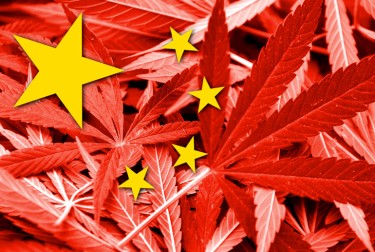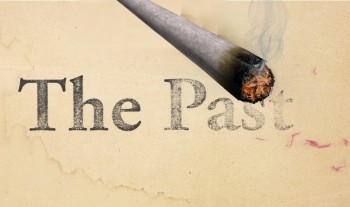
Saturday, August 2nd, 2025, marks the 88th anniversary of the Marihuana Tax Act - the beginning of America's longest-running policy disaster. For nearly nine decades, the federal government has waged war against a plant, spending trillions of dollars, destroying millions of lives, and empowering criminal organizations while failing spectacularly at every single stated objective. After 88 years of prohibition, what do we have to show for it? Record-breaking drug availability, unprecedented overdose deaths, militarized police forces, mass incarceration, and thriving criminal cartels that make more money than most Fortune 500 companies.
The numbers are staggering and damning: nearly 30 million marijuana arrests since the 1970s, with over 20 million occurring just between 1990 and 2023. Hundreds of billions of dollars spent on enforcement, prosecution, and incarceration. Countless families destroyed, careers ruined, and communities devastated - all in service of a policy that was founded on racist lies and has never achieved any of its purported goals.
But perhaps most damning of all, we now have laboratory evidence of prohibition's failure in the form of state-level legalization. Twenty-four states have implemented adult-use cannabis legalization, and not one has experienced the apocalyptic consequences that prohibitionists have been predicting for decades. Instead, legal states have seen reduced youth usage, decreased criminal activity, increased tax revenue, and improved public health outcomes. The only time we've actually seen reductions in cannabis-related problems is when we stopped treating them as criminal justice issues.
The time has come to acknowledge the obvious: cannabis prohibition is not just a failure - it's an active threat to American values of liberty, justice, and limited government. Any politician who continues supporting this destructive policy is an enemy of the American people and everything this nation claims to represent. After 88 years of lies, it's time to end the charade and embrace the truth that prohibition advocates have spent nearly a century trying to suppress.
The Foundation of Lies: How Prohibition Began
Cannabis prohibition wasn't born from scientific evidence or legitimate public health concerns - it emerged from a toxic combination of racism, political opportunism, and corporate interests that needed a new enemy to justify their existence. The early propaganda campaigns that convinced Americans to criminalize marijuana read like parodies of rational policymaking, yet they formed the foundation for nearly a century of destructive enforcement.
The 1927 New York Times story claiming that "A widow and her four children have been driven insane by eating the marihuana plant" with "no hope of saving the children's lives" represents the journalistic standards that shaped early cannabis policy. A 1933 academic paper declared that cannabis use "invariably" resulted in "insanity, which those familiar with it describe as absolutely incurable, and, without exception, ending in death." These weren't fringe opinions - they were mainstream "expert" assessments that influenced legislation and public opinion.
Harry J. Anslinger, America's first Drug Czar, built his cannabis prohibition campaign almost entirely on racist rhetoric designed to exploit white fears about minority populations and social change. His claim that "100,000 total marijuana smokers in the U.S., and most are Negroes, Hispanics, Filipinos, and entertainers" whose "Satanic music, jazz and swing, result from marijuana use" reveals the true motivation behind prohibition: using drug laws to target specific communities and cultural movements.
Anslinger's assertion that "marijuana causes white women to seek sexual relations with Negroes, entertainers, and any others" exposes prohibition as a tool of racial and social control rather than public health policy. The federal government criminalized cannabis not because it was dangerous, but because it was associated with people and cultures that white political elites wanted to suppress.
The American Medical Association's opposition to the Marihuana Tax Act provides crucial evidence that prohibition was never based on medical or scientific consensus. The nation's premier medical organization disputed the government's claims about cannabis causing violence, insanity, and death, but politicians ignored medical expertise in favor of racist propaganda and political convenience.
The 1971 escalation under Nixon revealed prohibition's fundamentally dishonest nature when the administration declared cannabis "public enemy number one" while privately acknowledging that the president didn't consider it "particularly dangerous" and found penalties "ridiculous." John Ehrlichman's later admission that "we couldn't make it illegal to be either against the (Vietnam) war or Black," but could criminalize drugs associated with these groups, exposes prohibition as deliberate political warfare against dissenting communities.
The Controlled Substances Act slipped cannabis into Schedule I classification through bureaucratic manipulation rather than scientific evaluation. Despite the newly-formed National Commission on Marihuana and Drug Abuse (the Shafer Commission) recommending decriminalization in 1972, the Nixon administration ignored their own experts' conclusions and maintained prohibition for political purposes.
This pattern of ignoring scientific evidence while promoting political propaganda has characterized prohibition enforcement for the entire 88-year period. Every major government study has found that cannabis prohibition causes more harm than cannabis use itself, yet political leaders continue supporting policies they know don't work because those policies serve other purposes.
The Catastrophic Costs: What 88 Years of Prohibition Produced
After spending an estimated $1 trillion on drug war enforcement since 1971, American taxpayers deserve an accounting of what they've received for their investment. The results are catastrophically bad by every possible metric, representing perhaps the most comprehensive policy failure in American history.
Cannabis availability has increased rather than decreased under prohibition. Today's marijuana is more potent, more diverse, and more accessible than at any point in American history. Prohibition didn't eliminate supply - it incentivized producers to develop more concentrated products that are easier to smuggle and more profitable to sell. The "skunk weed" that prohibition advocates complain about exists precisely because prohibition favored high-potency products over safer, lower-potency alternatives.
Youth usage rates remained stable or increased throughout most of the prohibition era, only declining in recent years as states implemented legalization with proper age controls and education programs. Prohibition's black market approach to cannabis distribution never included age verification, safety standards, or honest education about risks and benefits. Drug dealers don't check IDs or refuse sales to minors.
Criminal organizations grew from small-scale operations into international cartels generating hundreds of billions in annual revenue thanks to prohibition's artificial scarcity and price supports. Mexican cartels, Chinese drug trafficking organizations, and domestic criminal enterprises owe their existence and wealth to prohibition policies that eliminated legal competition while maintaining high consumer demand.
Mass incarceration exploded alongside drug war escalation, with nearly 30 million cannabis arrests since prohibition began and over 20 million just since 1990. These arrests disproportionately targeted minority communities, creating the world's largest prison population while accomplishing nothing beyond destroying lives and families. The "land of the free" became the most incarcerated society in human history, largely through drug war enforcement.
Synthetic drug proliferation represents prohibition's most dangerous unintended consequence. Substances like K2, Spice, synthetic cannabinoids, and fentanyl exist because prohibition incentivized chemists to develop new compounds that aren't specifically banned. These synthetic alternatives are often far more dangerous than the natural substances they replace, creating public health crises that wouldn't exist under legal regulation.
Police militarization accelerated through drug war operations that transformed local law enforcement from community service organizations into paramilitary forces equipped with military hardware and trained for combat operations. SWAT team raids, no-knock warrants, civil asset forfeiture, and aggressive enforcement tactics normalized police violence and destroyed community-police relationships.
Constitutional erosion occurred as drug war enforcement requirements overwhelmed Fourth Amendment protections against unreasonable search and seizure. Drug dogs, mandatory minimum sentences, civil asset forfeiture, and surveillance programs created exceptions to constitutional rights that have been applied far beyond drug enforcement.
Public health deterioration resulted from treating drug use as a criminal justice issue rather than a medical condition. Prohibition prevented honest education about drug risks, blocked access to harm reduction services, and criminalized people who needed medical help rather than punishment.
Economic damage from prohibition includes not just enforcement costs but also lost tax revenue, reduced productivity from incarceration, and opportunity costs from resources diverted away from productive activities. States that have legalized cannabis generate hundreds of millions in tax revenue while reducing criminal justice expenses.
The Legalization Laboratory: Proof That Prohibition Doesn't Work
The most damning evidence against prohibition comes from the natural experiments provided by state-level cannabis legalization. Twenty-four states have now implemented adult-use legalization, creating real-world laboratories that test prohibitionist predictions against observable outcomes. The results are unambiguous: legalization works better than prohibition by every meaningful metric.
Youth usage rates have decreased in most legal states, contradicting prohibitionist claims that legalization would increase teenage cannabis use. Colorado, Washington, and other early-adopting states show consistent patterns of reduced youth access and usage following legalization implementation. Legal markets include age verification requirements, educational programs, and regulated distribution that black markets can't provide.
Criminal activity related to cannabis has plummeted in legal states as regulated businesses replace illegal operations. Cannabis-related arrests have virtually disappeared in legal jurisdictions, freeing law enforcement resources for serious crimes while eliminating the criminalization of adults engaged in consensual behavior.
Tax revenue generation has exceeded projections in most legal states, providing hundreds of millions in annual revenue for education, public health, infrastructure, and other public services. Colorado alone has generated over $600 million annually in cannabis tax revenue, funding school construction, addiction treatment, and regulatory oversight.
Public safety improvements have characterized legalization implementation despite prohibitionist predictions of increased crime, impaired driving, and social disorder. Legal states show stable or improved public safety metrics, with some jurisdictions reporting decreased crime rates following legalization.
Economic development through legal cannabis industries has created thousands of jobs, attracted investment, and revitalized communities in legal states. Cannabis businesses contribute to local economies through employment, real estate development, supplier relationships, and community investments that illegal markets never provided.
Medical patient access has improved dramatically in legal states where patients can obtain standardized products, proper dosing information, and medical guidance without risking arrest. Legal markets serve medical needs that prohibition forces underground or leaves unmet entirely.
Product safety and quality control exist only in legal markets where testing requirements, labeling standards, and regulatory oversight ensure consumers receive safe, accurately-labeled products. Prohibition's unregulated markets offer no safety protections and often include dangerous adulterants.
The most telling evidence comes from the fact that no state has ever repealed cannabis legalization after implementing it. If legalization caused the problems that prohibitionists predict, at least one state would have reversed course. Instead, public support for legalization increases in states with direct experience of legal cannabis markets.
International evidence supports American state-level findings, with countries like Portugal, Netherlands, Canada, and Uruguay demonstrating that non-punitive approaches to cannabis produce better outcomes than criminalization. The global trend toward legalization reflects accumulating evidence that prohibition causes more harm than cannabis use itself.
The Prohibition Profiteers: Who Benefits from Cannabis Criminalization
Understanding why prohibition persists despite overwhelming evidence of its failure requires examining who profits from cannabis criminalization. Various industries, organizations, and institutions have financial incentives to maintain prohibition regardless of its social costs or effectiveness.
The prison-industrial complex generates billions in revenue from drug war enforcement, including private prison companies, defense contractors providing law enforcement equipment, and service providers supplying goods to correctional facilities. Mass incarceration creates profit centers that lobby for continued criminalization to protect their business models.
Law enforcement agencies receive federal funding, military equipment, and civil asset forfeiture revenue tied to drug war operations. Police departments have become dependent on drug war resources that would disappear under legalization, creating institutional incentives to oppose reform regardless of public safety considerations.
Pharmaceutical companies view cannabis as competition for prescription drugs treating pain, anxiety, sleep disorders, and other conditions that cannabis addresses effectively. The opioid crisis demonstrates how pharmaceutical profits take priority over patient welfare when companies fear losing market share to safer alternatives.
Alcohol and tobacco industries recognize cannabis as competitive threat to their products, particularly among younger consumers who might substitute marijuana for alcohol or cigarettes. These industries have historically funded anti-cannabis organizations and political campaigns to protect their market positions.
Drug testing companies generate hundreds of millions in annual revenue from workplace cannabis testing requirements that exist only because of prohibition. Legalization threatens this entire industry sector by eliminating the legal basis for most cannabis testing programs.
Rehabilitation and treatment centers often receive funding based on drug war enforcement that identifies clients through criminal justice referrals. Some treatment providers have financial incentives to oppose legalization that would reduce their client pipeline.
Political careers have been built on drug war tough-on-crime messaging that would become irrelevant under legalization. Many prosecutors, judges, and elected officials have professional identities tied to prohibition enforcement that legalization would make obsolete.
The international drug war bureaucracy includes DEA, various federal agencies, and international organizations whose budgets and authority depend on maintaining prohibition. These agencies have institutional incentives to oppose reforms that would reduce their funding and relevance.
Understanding these profit incentives explains why prohibition persists despite clear evidence of failure. The financial beneficiaries of cannabis criminalization have resources to fund opposition campaigns, lobby politicians, and spread propaganda that serves their interests rather than public welfare.
The Sticky Bottom Line: Time to End the 88-Year Lie
After 88 years, nearly 30 million arrests, and trillions of dollars spent, cannabis prohibition has achieved exactly none of its stated objectives while creating numerous problems that didn't exist before criminalization began. By every meaningful metric - availability, youth usage, criminal profits, public safety, individual liberty - prohibition has failed completely while imposing enormous costs on American society.
The evidence is overwhelming and undeniable: states with legal cannabis see reduced youth usage, decreased criminal activity, increased tax revenue, and improved public health outcomes. Meanwhile, prohibition states continue experiencing all the problems that legalization was supposed to prevent, plus the additional harms caused by criminalization itself.
Any politician who continues supporting cannabis prohibition in 2025 is either ignorant of the evidence or deliberately choosing to harm their constituents for political advantage. There is no good-faith argument for maintaining policies that have failed for 88 years while alternatives have proven successful wherever they've been implemented.
The time for incremental reform has passed. Schedule III rescheduling, decriminalization, medical-only programs, and other half-measures cannot address the fundamental injustice of criminalizing adults for using a substance that's safer than alcohol and more beneficial than most prescription drugs.
Full legalization - removing cannabis from the Controlled Substances Act entirely and treating it like alcohol - is the only rational response to 88 years of prohibition failure. Anything less represents continued commitment to policies that everyone knows don't work.
Politicians who stand in the way of legalization after 88 years of evidence are enemies of American values, American citizens, and American prosperity. They deserve to be voted out of office by constituents who are tired of funding policy disasters that serve special interests rather than public welfare.
Cannabis prohibition began with lies about "Mexican families going insane" and continues with lies about public safety, youth protection, and medical necessity. After 88 years of lies, deception, and failure, it's time to choose truth over propaganda, evidence over ideology, and liberty over authoritarianism.
End cannabis prohibition now. The American people have suffered under this failed policy long enough.
COSTS OF PROHIBITION, READ ON...
INSIDE AN ILLEGAL CHINESE CANNABIS FARM, READ THIS!







